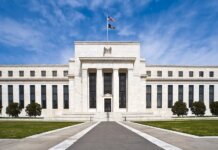REQUIRED READING: For some time now, commercial real estate professionals have been anticipating a wave of foreclosures. Hundreds of billions of dollars worth of commercial real estate loans either have matured or are expected to mature in the coming months, leaving borrowers unable to refinance or pay back what they owe.
However, with the exception of a small percentage of upside-down properties, most of these properties have not yet been foreclosed upon. So, why are commercial properties continuing to avoid foreclosure, and what needs to occur in order for these assets to be returned to the market?
First, commercial mortgage-backed securities (CMBS) can complicate matters. For institutional lenders that granted loans using a specific property or portfolio of properties as collateral, the foreclosure process is relatively straightforward. If a borrower can no longer service its debt, the property that was used as collateral can be foreclosed and returned to the lender.
But in the case of properties or portfolios that were used as collateral for CMBS, the process is much more complicated. Each defaulting property or portfolio is owned by the pool of investors that own the CMBS products that collectively financed these assets.
Consequently, no single lender can accept receivership of the defaulting property or properties. Instead, a special servicer must be appointed to oversee the foreclosure process and ensure that every investor's individual interests are met.
Many commercial properties have been undergoing foreclosure for quite some time as special servicers attempt to peel back the multi-layered financing that is characteristic of CMBS products.
Despite the large role that CMBS has played in the delay of commercial foreclosures, there have also been other forces at work. Even commercial properties that were financed by single institutional lenders have been slow to foreclose.
Most lenders are reluctant to take ownership of defaulting commercial properties and are actively delaying their foreclosure. Often facing limited market knowledge of commercial real estate submarkets, lenders are reluctant to burden themselves with the liability and challenge of managing these assets.
Instead, many lenders are choosing to renegotiate with borrowers in order to work through these tough times, particularly if the defaulting property is continuing to produce income, albeit at a much lower level than was projected at the time the loan was granted.
Foreclosure alternatives
For many commercial properties, renegotiating the loan is simply impossible, because borrowers cannot service debt, forcing lenders to assume control of these assets, typically via foreclosure.
As an alternative, some lenders have turned to loan sales, which allow distressed properties to change hands without lenders having to foreclose on the assets. A growing number of nonperforming commercial property loans are being sold by local, regional and foreign lenders to avoid the foreclosure process and the liabilities associated with the ownership on the chain of title.
Lenders are opting to sell loans at anywhere between 30% and 70% of their original value, depending on the asset type, physical condition and property submarket. The lender can write down its losses immediately and clear its balance sheets, rather than risk suffering a further fall in value.
Despite lower levels of commercial foreclosures than many real estate professionals have predicted, commercial foreclosures are, nonetheless, occurring in all commercial real estate markets and across all product types.
Foreclosure rates appear to be higher in the office market than the industrial market, with the retail market somewhere in between. Much of this difference can be attributed to the boom in development, which was more concentrated in the office market due to the higher returns initially offered by this property type. Consequently, office space was added to the market at much higher rates than other product types.
Despite having the highest rates of anticipated return, office product also requires the highest level of additional investment in order to fill the space because it requires expensive tenant improvements and leasing costs.
Conversely, tenant improvements and leasing costs for industrial properties are generally lower than most other commercial property types. During the development boom, less industrial product was added to the market because it offered less favorable returns.
Demand for industrial space has, therefore, remained more in balance with supply, and the space that is vacant requires the least additional capital in order to fill. As a result, office foreclosure rates seem to have been higher than industrial foreclosure rates.
More and more retail properties are entering the foreclosure process today because of the vast decline in consumer demand. The drop in U.S. consumer spending has forced a great number of retailers out of business, along with decreased revenue for existing retailers.
Furthermore, as anchor tenants have vacated centers, the remaining retailers whose lease agreements were tied to the presence of these anchor tenants have been able to break their leases, negotiate lower rates or move to more profitable centers. Retail-center owners have been forced to endure a double hit, which has resulted in an increasing rate of retail property foreclosures.
Resetting property values
Most commercial property loans were underwritten based on projected incomes that were much higher than the incomes they produce today. Under current conditions, many borrowers cannot service their debt.
Despite lenders' best efforts to wait on the sidelines in the hope that stimulus money will re-ignite the economy and return property values to their pre-downturn levels, many commercial properties still face an inevitable value reset.
Thus, the wave of foreclosures is set to break, as lenders are forced to accept reality and foreclose on these commercial properties in order to offload them. When, precisely, this wave will hit is impossible to predict, but as the Federal Deposit Insurance Corp. continues to take over additional banks, it is likely that the pressure on lenders to address these declining property values will result in more distressed sale transactions.
Even though commercial foreclosures will increase and loan sales will rise over the course of this year, this will only be the beginning. Many of the larger lenders that benefited from Troubled Asset Relief Program funds and have since been stockpiling cash will continue to hold on to their assets, hoping to wait out the market.
Thus, the inventory of distressed property will be slowed in its return to the market, delaying the basis reset of property values. Unfortunately, until property values are reset, most buyers will not be interested in making purchases. In conjunction with rising loan sales, additional foreclosures will result in downward pressure on property values.
When commercial property values finally do reset to a market level, in order for investment activity to rebound, liquidity and tenant demand will still need to return before buyers are motivated to take action.
Some buyers with cash are already active in the commercial real estate market, but their interest remains focused on the few properties that offer exceptional investment opportunities. Additionally, the majority of property sales and the majority of investors will not resume activity until commercial financing becomes more widely available.
In order for the debt markets to rebound and for lenders to start lending, commercial properties must be able to generate sufficient income for borrowers to service their debt. For this to happen, property values must be returned to a level that is proportional to today's market lease rates.
Increased foreclosures will result in lower property values, but this must happen alongside renewed tenant demand (likely fueled by job growth and increased consumer spending). When these market forces finally come into play, commercial real estate will once again attract the high volume of investment that characterized it in the past.
Tony O'Neill is a distressed-asset specialist at San Diego-based Voit Real Estate Services, where he assists commercial lenders in their valuation and project-completion strategies, as well as disposition strategies for distressed and foreclosed real estate projects. O'Neill can be contacted at toneill@voitco.com or (858) 458-3321.











